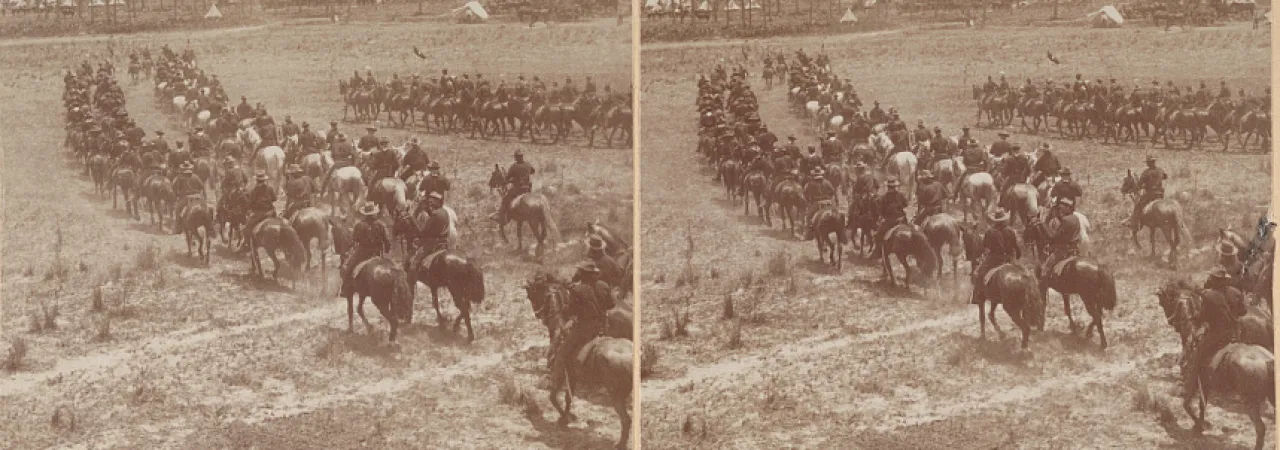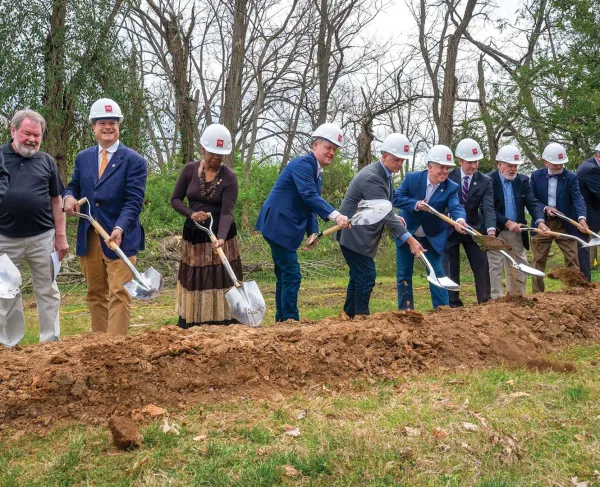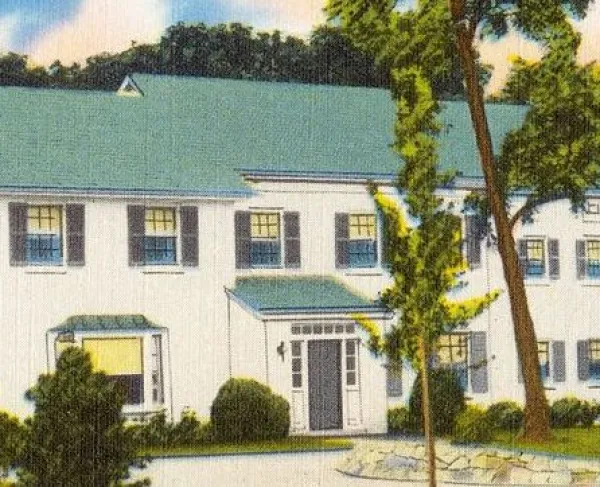The "Fighting Sixth:" 6th U.S. Cavalry
Known today as the “Fighting Sixth,” the 6th United States Cavalry was established by President Abraham Lincoln less than a month after the bombardment of Fort Sumter. Originally raised as the 3rd United States Cavalry, the regiment augmented the five mounted units already serving in the United States Army. With its headquarters located in Pittsburgh, the regiment was recruited from communities in Pennsylvania, Ohio, and western New York. Among its original officers were William W. Averell, David M. Gregg, John Irvin Gregg, August Kautz, and Charles Russell Lowell.
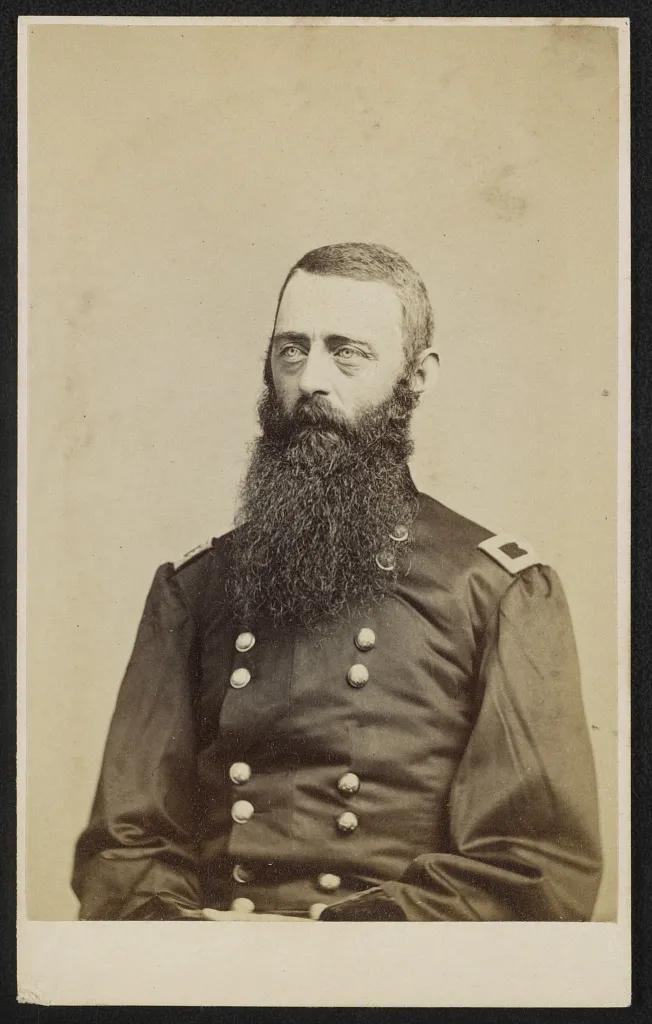
On August 3, 1861, the regiment was re-designated by an act of Congress to the 6th U.S. Cavalry. That fall, eight companies moved to Washington D.C. Assigned to the Army of the Potomac, the regiment experienced heavy fighting in Virginia, Maryland, and Pennsylvania.
During the initial stages of the Battle of Williamsburg in May 1862, the 6th U.S. engaged elements from the Hampton and Wise Legions around Fort Magruder. As part of the Reserve Brigade, it splashed across Beverly Ford on June 9, 1863, to engage enemy cavalry around Brandy Station. Elements of the regiment supported the 6th Pennsylvania Cavalry in their assault on the Confederate horse artillery positioned at St. James Church. Later in the day, the 6th U.S. fought Brig. Gen. W.H.F “Rooney” Lee’s brigade along Yew Ridge. Of the 254 men engaged at Brandy Station, the regiment lost 67 killed, wounded and missing. A little less than two weeks later at the Battle of Upperville, the Sixth engaged Brig. Gen. Wade Hampton’s brigade for control of the Ashby Gap Turnpike. Due to confusing orders, the regiment did not properly form and rushed to the attack. Difficult terrain and misalignment caused the charge to break down before it could reach Hampton’s position. Through the efforts of the American Battlefield Trust, over 3,000 acres have been preserved at these battlefields.
On July 3, 1863, outside Gettysburg, Brig. Gen. Wesley Merritt detached the 6th U.S. to Fairfield, Pennsylvania. Merritt had received reports of a Confederate wagon train in the area and sent the regiment to investigate. Moving through the town, the Sixth ran into Brig. Gen. William E. “Grumble” Jones’s brigade. Heavily outnumbered, the regiment was driven from their position. The Sixth lost 232 of the 400 men it took to Fairfield. The Sixth encountered elements from Jones’s brigade once again at Funkstown, Maryland four days later and suffered another 59 casualties. The combined losses at Fairfield and Funkstown crippled the Sixth. For the remainder of the war, it was assigned to escort duty at Cavalry Corps headquarters.
Following the Civil War, the regiment was assigned to duty in Texas. For the next several years, it had the task of combating Comanches and outlaws, along with assisting civil authorities in their responsibilities. In 1871, the regiment transferred to the Department of Missouri where it continued to engage Native American tribes and fought in the Red River War. On November 8, 1874, Company D of the Sixth and Company D of the 5th U.S. Infantry attacked and destroyed Gray Beard’s Cheyenne village on McClellan’s Fork of the Red River. Two captives, Adelaide and Julia German, who had been captured on their family’s journey to Colorado, were recovered during the fight.
The following spring, the unit was transferred to Arizona. For the next nine years, the Sixth engaged hostile Chiricahua, Warm Springs, and White Mountain Apaches. Company I participated in General George Crook’s expedition to the Sierra Madre Mountains in the summer of 1883. It traveled nearly 1,000 miles and returned 400 Apaches to their reservations.
The Sixth left Arizona for New Mexico in July 1884. In the fall of 1886, one of the regiment’s officers, 1st Lt. Charles B. Gatewood helped induce the surrender of the great Chiricahua Apache chief, Geronimo. As a result of the Ghost Dance movement, the 6th U.S. left the Southwest in December 1890. Three days after the Wounded Knee tragedy, three companies skirmished with the Sioux near the White River in South Dakota.
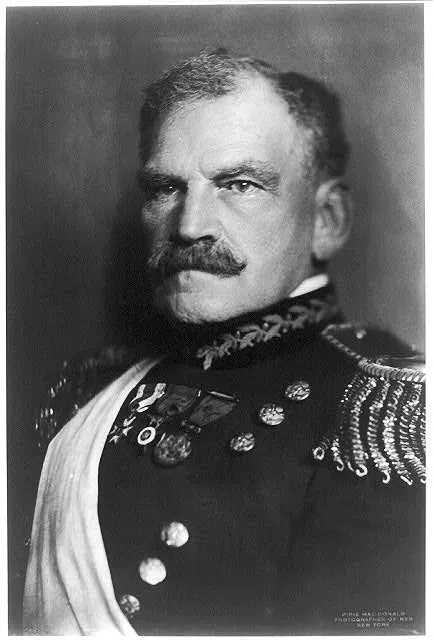
Two officers who served in the regiment would go on to serve as Army Chief of Staff. Adna R. Chaffee enlisted in Company K on July 22, 1861. Appointed Lieutenant in March 1863, he was wounded at the Battle of Fairfield. Chaffee participated in Crook’s expedition to Mexico during the Apache Wars and led the Chinese Relief Expedition. Eventually appointed Lieutenant General, he held the post from January 1904 to January 1906. Unlike Chaffee, John J. Pershing graduated from West Point in the Class of 1886. He served in New Mexico, the Wounded Knee Campaign and commanded the American Expeditionary Force in France during World War I. With the rank General of the Armies, Pershing served as Chief of Staff from July 1921 to September 1926.
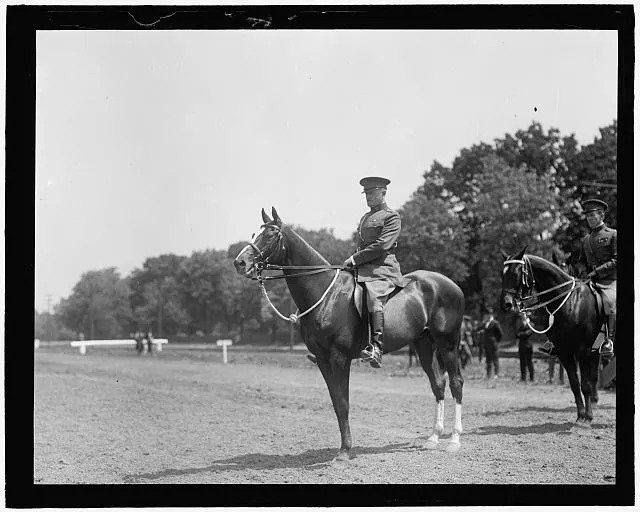
At the outbreak of war with Spain, the regiment was assigned to Brig. Gen. Joseph Wheeler’s cavalry division and served in Cuba. On July 1, 1898, the Sixth took part in the assault on San Juan Heights. The regiment served in China during the Boxer Rebellion, where the 3rd Squadron participated in the storming of Peking.
During the First World War, the regiment went to Europe. However, it did not participate in any direct combat. On New Year’s Day, 1944, the regiment was reorganized and re-designated as Headquarters and Headquarters Troops, 6th U.S. Cavalry Group, Mechanized, and the 6th and 28th Cavalry Reconnaissance Squadrons, Mechanized. Assigned to Gen. George S. Patton’s Third Army, it fought in Normandy and the Ardennes. For its conduct in the Harlange Pocket, the regiment received the Presidential Unit Citation, the highest award given to an army unit.
The unit continues to serve the United States to this day. The 2nd Squadron fought in Operation Desert Storm, Operation Enduring Freedom, and, along with the 6th Squadron, Operation Iraqi Freedom. The regiment’s motto, Ducit Amor Patriae, Led by Love of Country, rings just as true for the members of the unit today as it did for their predecessors over 150 years ago.
Related Battles
2,283
1,560
866
433
209
180
23,049
28,063
